‘Tis the season. Break out the eggnog, don your favorite ugly sweater, and put on your favorite Christmas movie. The visual companions to the yuletide glee come in all shapes. Some tell charming stories of overworked parents rediscovering how much their family means to them. Some regale us with tales of elves and magic in lands of wintry whimsy. Others chronicle a terroristic heist in a high-rise office building like 1988’s Die Hard.
The debate over Die Hard’s place as a Christmas movie is an annual masquerade, with holiday film purists on one side and those that insist on its inclusion on the other; each side bitterly hurling snowballs of genre logic and thematic archetypes across the room. But the bickering stops here. Die Hard is unequivocally a Christmas tale, both on the surface in its plot and beneath the hood where the tropes and symbolism hide.
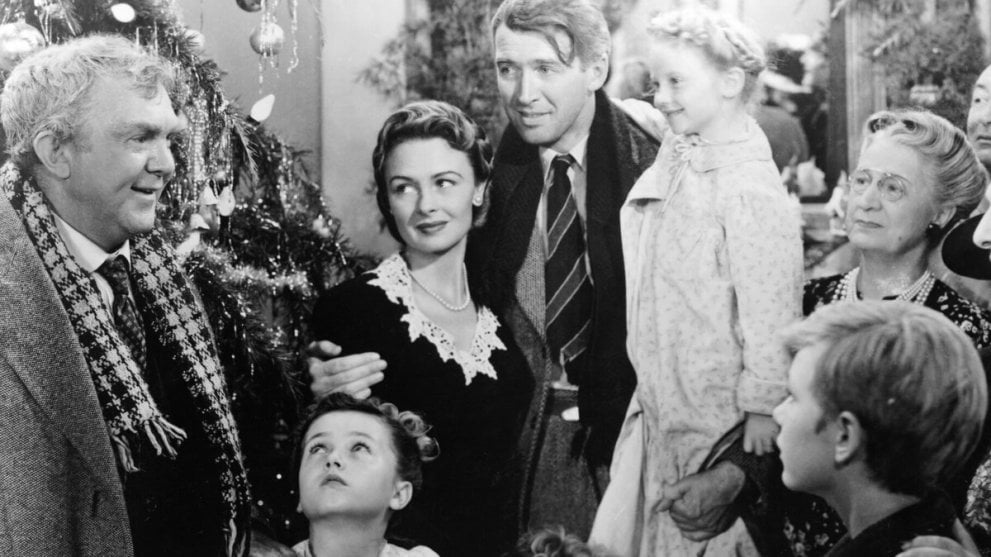
When we think of Christmas movies, what comes to mind? While a poll would yield a myriad of answers, two films that none can argue with are It’s a Wonderful Life and A Christmas Carol. The former tells a tale of the down-on-his-luck George Bailey (played by the always lovable James Stewart) and an angel who, through a series of trips into the past, shows him his life is not as pathetic or hopeless as he thinks and that life is worth living. A Christmas Carol runs along a similar thematic track and follows the story of Ebenezer Scrooge and his transformation into a softer, kinder man after being shown the error of his ways in the past, present, and future.
Both films are poster children for the genre because they hit three critical notes: setting, theme, and tropes. A Christmas movie must take place on or around the holiday itself in a place where it is being actively (either explicitly or implicitly) celebrated; this is the setting element. It must also deal with ideas of homecoming, transformation, epiphany, and moral change/reaffirmation; this is the thematic category. Finally, they all bear the ancillary and accessory accouterments that make up the texture of a holiday film. From the snow to the trees to angels or Santa himself; these are the tropes. Die Hard strikes all these chords, but it does so in a subtle (and sometimes not so subtle) way, which leads many to mistake/deny its status as a true Christmas classic.
The Setting

Die Hard takes place on the night of Christmas Eve and spills over into Christmas day. While the intent of a film’s creators is a separate issue entirely, it is curious to note that the story of John McClane fighting terrorists could have happened on any day of the year. The film still functions as an exciting action outing even when completely divorced from its proximity to the yuletide glee. It stands to reason that the writers of Die Hard made a conscious choice to tell the story on Christmas. And since festive garlands and twinkling lights do little in the way of accenting explosions and gunplay, it’s safe to say the decision is for the sake of the themes the genre carries with it. It is not just a coincidence we watch the events at Nakatomi Tower unfold on Christmas.
The atmosphere inside the cold, corporate skyscraper is also festively adorned, as the employees were taken hostage are there for a Christmas party. Decorated firs and ornaments litter the 30th floor, and all the jolly paraphernalia one might expect to see featured in a typical Christmas film floats around many of the scenes as a result. Again, the story could have just as easily been told without the backdrop of the holiday, but barring even that, it takes place smack dab in the middle of a themed party ensuring the audience feels the significance of the date in as many scenes as possible.
The Themes
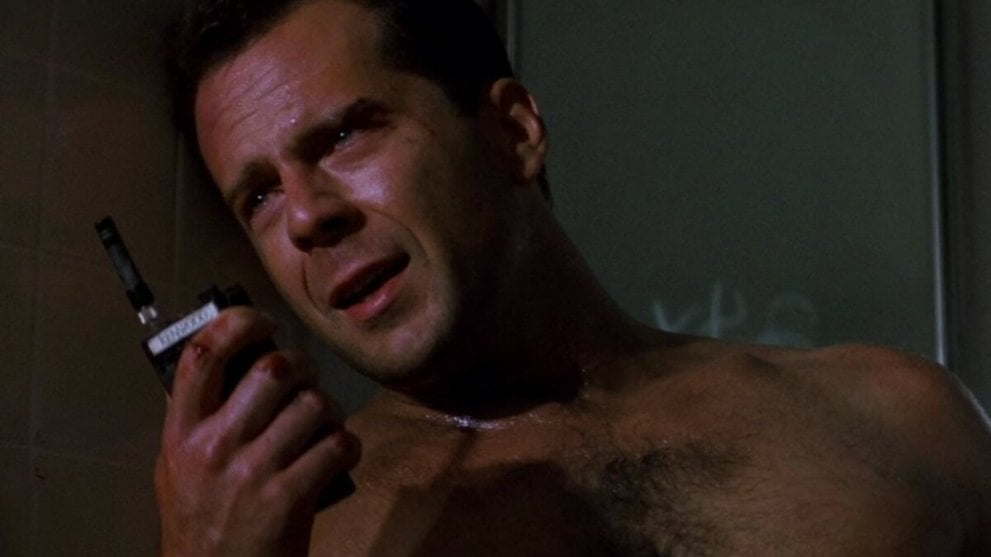
Die Hard plays into the traditional Christmas movie themes in its own alternative, subtle ways. As Argyle drives McClane to Nakatomi Towers, he puts on Christmas In Hollis by RUN DMC, to which McClane asks, “Don’t you have any Christmas Music?” Argyle’s response echoes nicely with the film’s subversive take on the genre: “This is Christmas music.” Much like the rap anthem, Die Hard is an edgier take on the tried-and-true template. It might not look or sound like what we expect, but at its core, it remains true to the genre’s tenets.
The film takes the line, “I’ll be home for Christmas” and cranks it to the extreme, replete with all the flashy thrills essential to an 80s action flick. McClane lives in New York City, away from his wife and children recently transplanted to Los Angeles. Tension in their marriage has driven a wedge between the two, but the grizzled East coast cop is making the trek on the very special day to be reunited with his loved ones, nonetheless. The difference here is, it isn’t minor inconveniences that bar McClane from his homecoming, it’s a hostage situation hundreds of feet in the air.
As mentioned above, the protagonist of any holiday film worth anything needs to be a flawed individual; they need to be lost and shown the way back to what is right with the help of the warmth and tenderness that the Christmas season offers. McClane himself is a prideful, hypermasculine, prickly man. He’s unable to dismiss his ego and admit his mistakes as a husband and a father, and his own stubborn nature is standing between him and proper reconciliation and reunion.
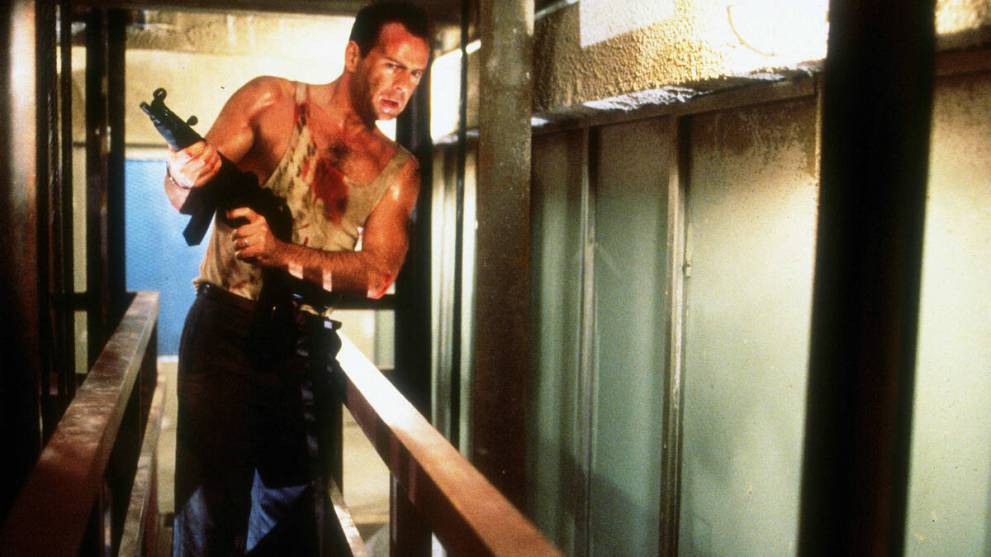
McClane’s ordeal against Hans Gruber’s maniacal plan is a means for his penance and transformation. It’s no coincidence he is barefoot throughout the debacle, much like the participants of religious pilgrimages looking to find inner meaning and a deeper sense of good. Likewise, his bruised, battered, and bloodied body by the end of the film serves as a physical indicator of his punishment/penance. His white shirt discarded by the story’s end, his pants filthy and tattered, McClane is stripped of all his egotistical postering, put through torturous and painful trial, and made vulnerable for all – his wife most importantly – to see.
By the film’s third act, McClane has broken down and seen the error of his prideful ways, telling Sergeant Powell to relay to his wife that it took him a while to figure out what a “jerk” he’d been, and that “she’s the best thing that ever happened to a bum like him.” McClane’s trials, like many Christmas classics, cease once he has admitted his faults and transformed his way of thinking, and give way to the homecoming and family reunion quintessential to any holiday film.
Die Hard also weaves themes of redemption through the arcs of its supporting characters. Powell, racked with guilt over accidentally killing a kid many years ago, finds the inner strength and confidence to eliminate the final enemy, Karl, as he comes raging out of the building in a last-ditch effort to completely ruin Christmas. Powell ultimately offers a shred of forgiveness to his own grieving conscience, drawing his pistol and proving to himself that he is a good cop and by extension a man that made a mistake that should not define him forever.
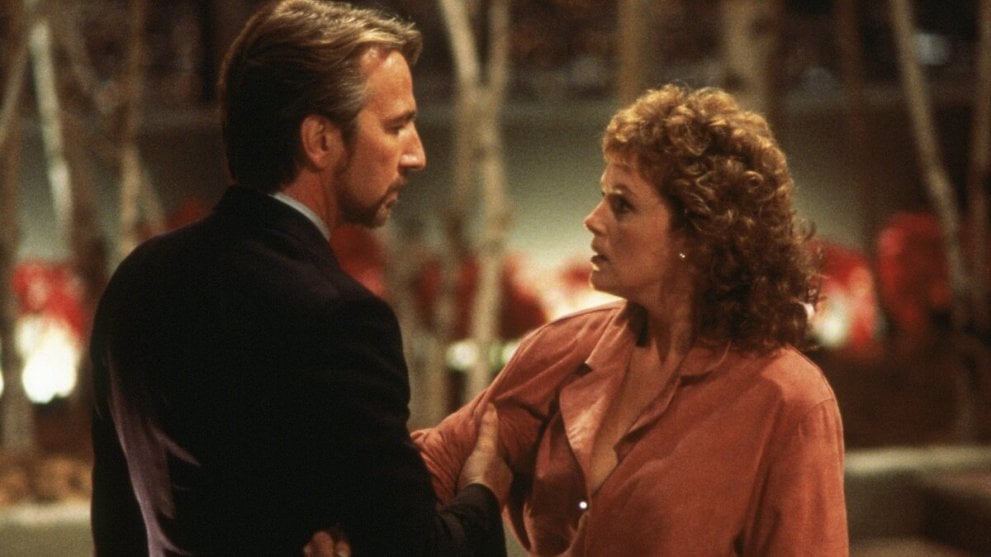
Holly Gennaro, McClane’s estranged wife, and high-powered executive, also undergoes her own Christmas transformation. Entrenched in the glitz and glamour that accompany her high-paying position, her expensive watch and refusal to don her husband’s last name serve as indicators of her deviation from valuing the spiritual over the material, and her family over her pride and career, respectively. The former is very symbolically realigned when she unlatches her Rolex to release Hans’ grip on her as he dangles from the skyrise window. The latter is resolved at the close of the story when she opts to use her married name to introduce herself to Sergeant Powell.
The three protagonists each receive their own holiday transformations: an epiphany, moral forgiveness, and a reaffirmation of values. The antagonist, Hans Gruber, functions as the sort of Anti-Santa (the Grinch, if you will) throughout the movie; bent on taking material possessions rather than giving them. The moment he and his thugs gleefully swarm the vault-like kids around the tree on Christmas day is a tongue-in-cheek reminder that these men stand against everything the holiday is about. They all, Hans included, receive their comeuppance in the starkest fashion possible: termination at the hands of an unwilling anti-hero of Christmas (McClane himself).
The Tropes
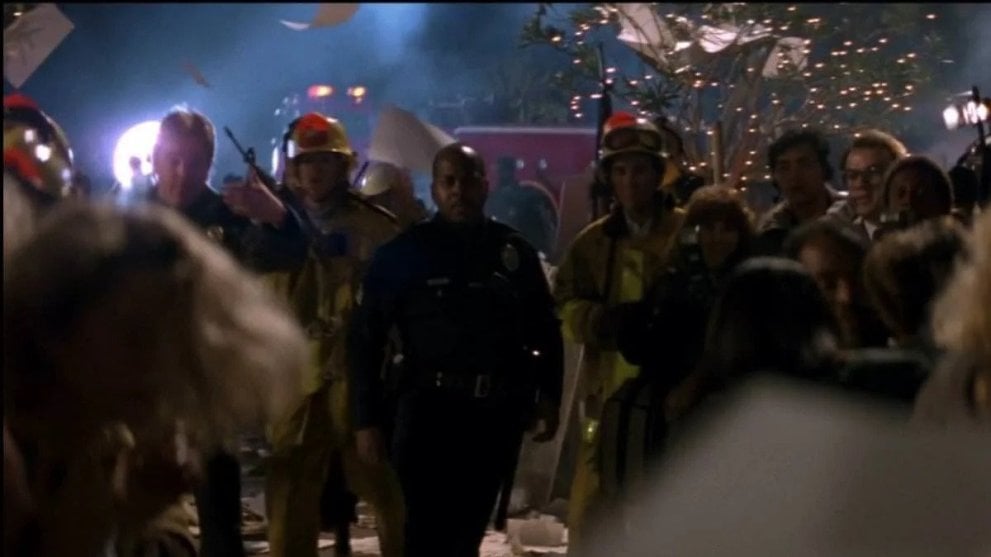
In addition to the holiday-themed trappings littered throughout, the film goes out of its way to cram as much homage to the genre as it can. The music accompanying Die Hard is best described as a Christmas medley, expertly integrating holiday classics like Ode to Joy, Let it Snow! Let it Snow! Let it Snow!, and others into its original score. The soundtrack of rising and falling action is continually intercut with measures from the soundtrack to the season itself, and a jingle of bells is used as an accent during both scenes of calm and mounting tension. Much like the film’s clever mashing of the genre, the soundtrack blends the sounds of a typified action outing with the levitous melodies of Christmas, blanketing the entire narrative with the angst and merriment appropriate for the hybrid it is.
Powell acts as McClane’s moral compass and source of strength, his proxy guide through his Christmas transformation much like the ghosts in A Christmas Carol and the angel in It’s A Wonderful Life. His voice over the radio is the unseen companion pushing the tired and bloodied McClane to his destination, offering hard truths and tender support alike. It’s a clever take on the “sherpa up the mountain” character, and it does so with such subtly that many viewers miss it if they are not looking closely enough.
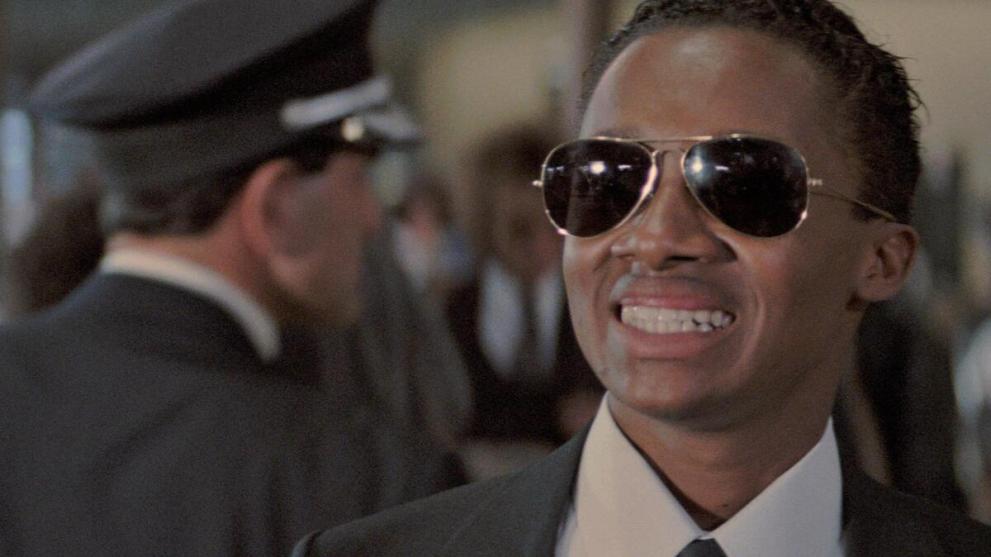
Argyle, in his black limousine, holding onto the giant stuffed bear that McClane is bringing home to his kids, stands in as a Christmas elf, a little helper, and a steadfast companion throughout the madness. Argyle keeps the “sleigh” ready and waiting so that when McClane returns, the metaphoric gift of his presence and the physical gift of the stuffed animal are ready to make their way home. From this angle, McClane is a gun-toting action Santa reclaiming the holiday from those looking to destroy it, and bringing the only gifts that matter (a reunited, loving family) home for the occasion.
Nothing says Christmas like snowfall on the day itself. Die Hard even find a way around this, given that it takes place in Los Angeles. As the building lies in a sorry state in the closing moments of the film, rocked by explosions and madness, debris and office paper flutter down from the sky. The result is a worthy stand-in for snow in an action movie set in sunny L.A. The surrogate snow, a symbol of frivolity and stillness, puts a perfect bow on the end of the chaos, as McClane reunites with his wife and the two set off into the sunrise on their modern sleigh.
A lot of the resistance toward the 80’s classic’s consideration as a holiday romp stems from inflexibility. While the opposition in the debate has waned over the years as more and more genres collide and lines between styles and themes continue to blur (something that Die Hard was on the frontier of without many people knowing at the time), there is something about the Christmas genre that people hold sacred, like it is a piece of their childhood they hold dear that they do not want to see perverted or distorted by considering Die Hard as a part of that fraternity.
There are few compelling arguments to be made to persuade someone out of beliefs bedded in nostalgia, but the best we can do is compare Die Hard to a penguin amongst birds. If you saw it at your grandma’s feeder you’d be confused. It’s out of place, it’s foreign, but it is at its core a bird. It has all the essential characteristics of a Christmas movie; it just looks nothing like one. But it is, and always will be, essential viewing for the holiday celebration.

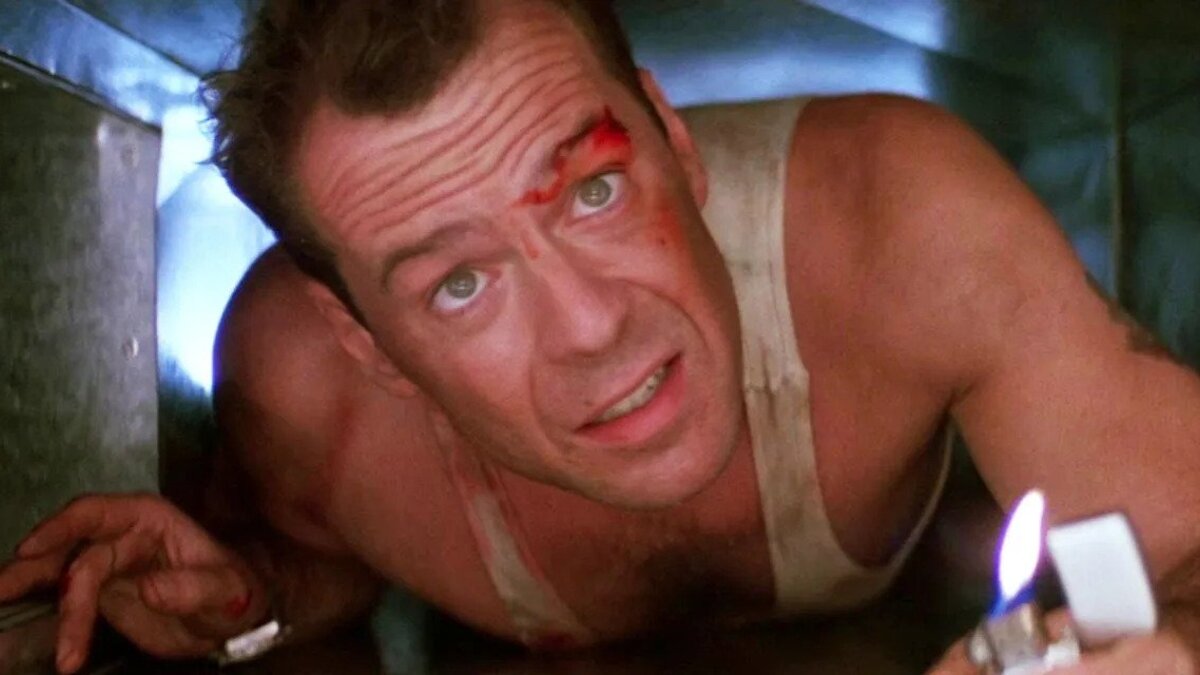

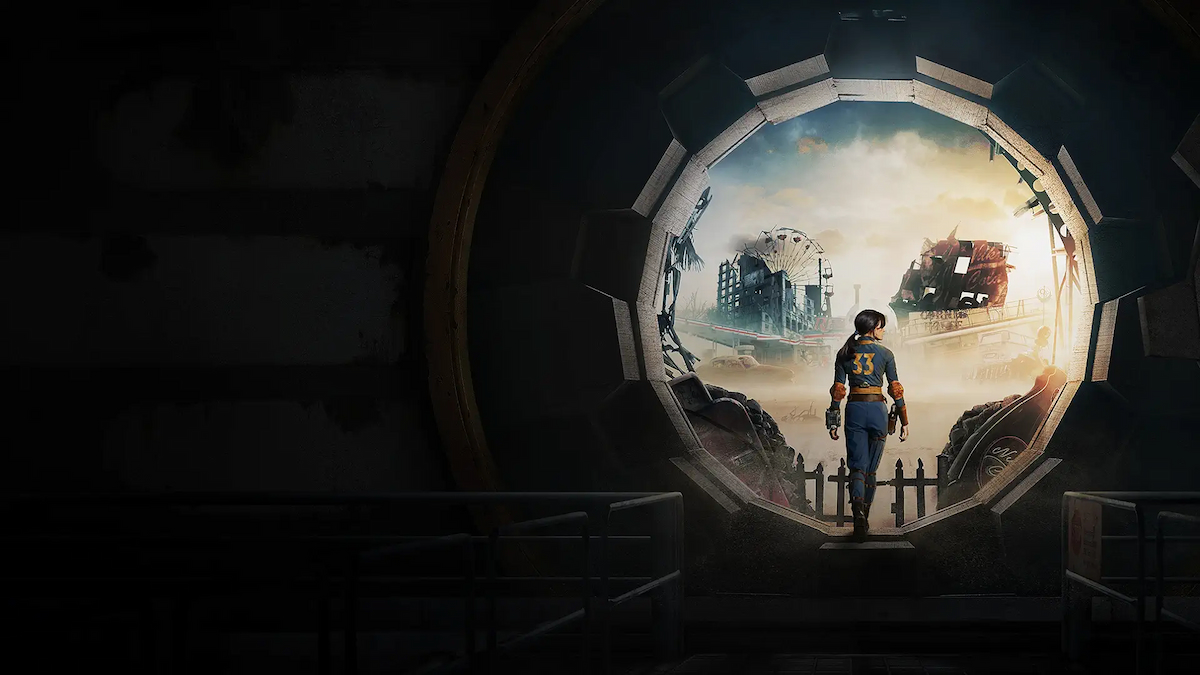
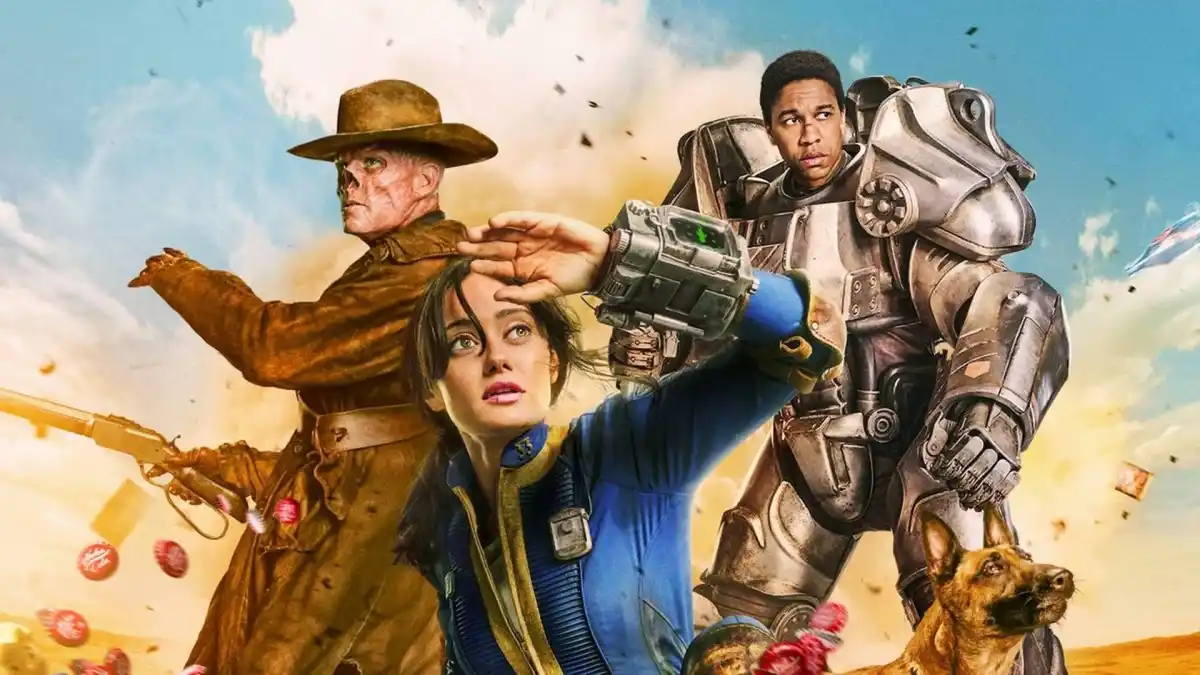
Published: Dec 20, 2022 12:12 pm